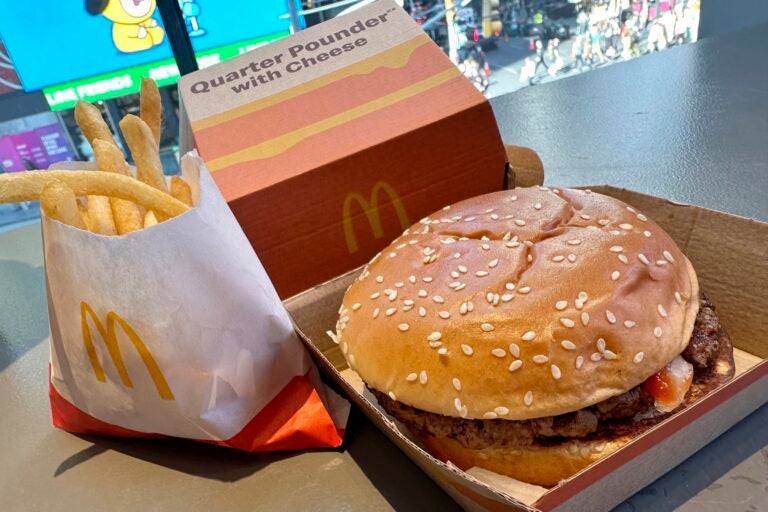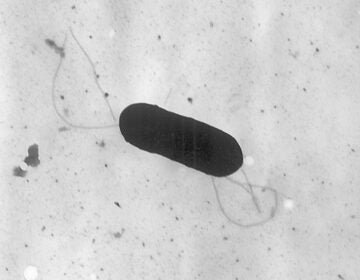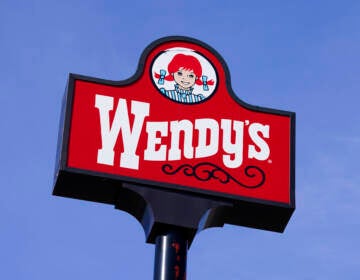What to know about E. coli and the McDonald’s outbreak
About 50 people have fallen ill in the McDonald's outbreak, and one has died, with ages ranging from 13 to 88, according to the Centers for Disease Control and Prevention.

A McDonald's Quarter Pounder hamburger and fries are shown in this photograph, in New York's Times Square, Wednesday, Oct. 23, 2024. (AP Photo/Richard Drew)
A food poisoning outbreak tied to McDonald’s Quarter Pounders was caused by a common type of E. coli bacteria that can cause serious illness and death.
Particularly vulnerable are young children, older people or those with weakened immune systems.
About 50 people have fallen ill in the McDonald’s outbreak, and one has died, with ages ranging from 13 to 88, according to the Centers for Disease Control and Prevention.
A preliminary investigation suggests raw slivered onions served on Quarter Pounders are a likely source of the outbreak.
Here’s what to know about the dangerous germ:
What is E. coli?
E. coli is a type of bacteria found in the environment, including water, food and in the intestines of people and animals. There are many kinds of harmless E. coli, but a few types can make people seriously ill. The McDonald’s outbreak is caused by E. coli O157:H7, which produces a toxin that causes dangerous diarrhea and can lead to kidney failure and other serious problems, according to the CDC.
How is it spread?
People can get sick from E. coli poisoning when they consume contaminated foods or through contact with animals, the environment or other people who are infected. Health officials initially focused on fresh slivered onions and beef patties as the possible sources of the McDonald’s outbreak. But the beef patties are an unlikely source because of federal requirements for testing meat and McDonald’s protocols that call for cooking it to a temperature that kills the bacteria. The onions are served raw.
What are the symptoms of E. coli poisoning?
Symptoms occur quickly, within a day or two of eating contaminated food, and typically include fever, vomiting, diarrhea or bloody diarrhea and signs of dehydration — little or no peeing, increased thirst and dizziness. The infection can cause a type of serious kidney injury, especially in kids younger than 5. E. coli poisoning in young children requires immediate medical attention.
How often does E. coli make people sick?
The type of bacteria implicated in this outbreak causes about 74,000 infections in the U.S. annually, leading to more than 2,000 hospitalizations and 61 deaths each year, according to the CDC. In general, E. coli infections were lower in 2023 than in recent years and cases of severe kidney injury caused by the bacteria remained stable, according to latest federal data.
What other germs can cause food poisoning?
Food poisoning sickens at least 48 million people in the U.S. each year, including 128,000 who are hospitalized and 3,000 who die. E. coli poisoning is only one cause of such infections. Other germs can make people sick, too. The most common is norovirus, a group of viruses that cause between 19 million and 21 million cases of food poisoning in the U.S. each year, according to the CDC. Salmonella bacteria in food sickens about 1.3 million people. Listeria bacteria cause fewer illnesses, about 1,600 each year, but are responsible for about 260 deaths.

Get daily updates from WHYY News!
WHYY is your source for fact-based, in-depth journalism and information. As a nonprofit organization, we rely on financial support from readers like you. Please give today.




